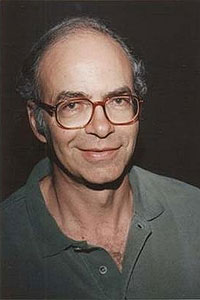
As our planet's climate heats up, so, too, does the debate about the boldest response to it: geoengineering, or the deliberate modification of the atmosphere to combat global warming.
In 2010, when Ken Caldeira and David Keith published "The Need for Climate Engineering Research," geoengineering had virtually no support. That is no longer the case.
Early critics like Clive Hamilton dismissed geoengineering as "playing God" -- an objection that misfires when addressed to those who do not believe that a divine being is safeguarding the fate of the planet. A more secular version of the objection might state that we should leave nature alone, but that battle was lost decades ago. We humans have already overwhelmed nature, to such an extent that many scientists suggest that we are now in a new geological epoch: the Anthropocene.
Now geoengineering is back on the agenda. In 2020, the US Congress directed the National Oceanic and Atmospheric Administration (NOAA) to develop a multi-year research initiative to investigate both natural and human activities that might alter the reflectivity of the stratosphere. Meanwhile, the National Academies of Sciences, Engineering, and Medicine recommended spending US$200 million (6.9 billion baht) on a research programme to see whether there is a safe way to cool the planet.
When Prof Caldeira and Prof Keith wrote about engineering the climate, several approaches were mooted, such as adding soluble iron to the ocean to increase the growth of phytoplankton, which would absorb and store carbon dioxide from the atmosphere. Research failed to validate that approach, however, and current research is focused on solar radiation modification (SRM) which aims to reflect a small part of the solar radiation that warms the surface of the Earth.
The eruption of Mt Pinatubo in 1991 put 15 million tonnes of sulphur dioxide into the stratosphere, where it mixed with water to form a layer of particles known as aerosols. This layer reduced the amount of solar radiation reaching the Earth's surface, reducing average global temperatures by 0.6 degrees Celsius for the next 15 months. That observation led some scientists to ask whether we could create a similar effect by deliberately releasing aerosols into the stratosphere -- the tool most favoured by those who want to learn more about how we might reduce solar radiation.
No responsible person would claim that we are ready to try something like that now, so the real debate is about whether to take the prior step: carry out research that might eventually make SRM feasible.
Two open letters give opposing answers. In January 2022, a group of scientists released a message directed at governments and the United Nations, calling for an International Non-Use Agreement on Solar Geoengineering. The letter, which has been signed by more than 400 academics from more than 60 countries, outlines three main concerns.
First, we are unable to understand fully the risks involved in geoengineering, given the complexities of both global and regional weather patterns. Second, giving credibility to the idea that geoengineering may save us from catastrophic global warming will weaken our resolve to address the root cause of climate change by achieving net-zero greenhouse-gas emissions. And, third, we lack any system of global governance with the authority to control the deployment of geoengineering in a manner that would be fair, inclusive, and effective.
In February, another open letter was published calling for "balanced research". The signatories, again scientists and academics, recognise that we must address the root cause of global warming by cutting our emissions and removing CO2 from the atmosphere, and accept that SRM carries its own environmental risks. Nevertheless, faced with a choice between a flat refusal to investigate SRM and "thorough and critical research", they prefer the latter.
Ten years ago, I would not have signed a call for research into geoengineering, but I signed the second letter. I changed my view because today we are in a more desperate situation than we were a decade ago. Climate change is occurring more rapidly than previously predicted, with temperature records broken, more severe droughts and floods, and more intense storms.
It is true, as the letter opposing any use of geoengineering states, that we may never achieve certainty about the risks of SRM. But we are also very far from certainty about the eventual impact of the greenhouse gases we have already put into the atmosphere, and of those we will continue to emit. There are risks either way. We currently have no idea whether the risks of attempting SRM outweigh the risks of not attempting it. We would be wise to try to find out. ©2023 Project Syndicate
Peter Singer, Professor of Bioethics at Princeton University, is Founder of the charity The Life You Can Save.
